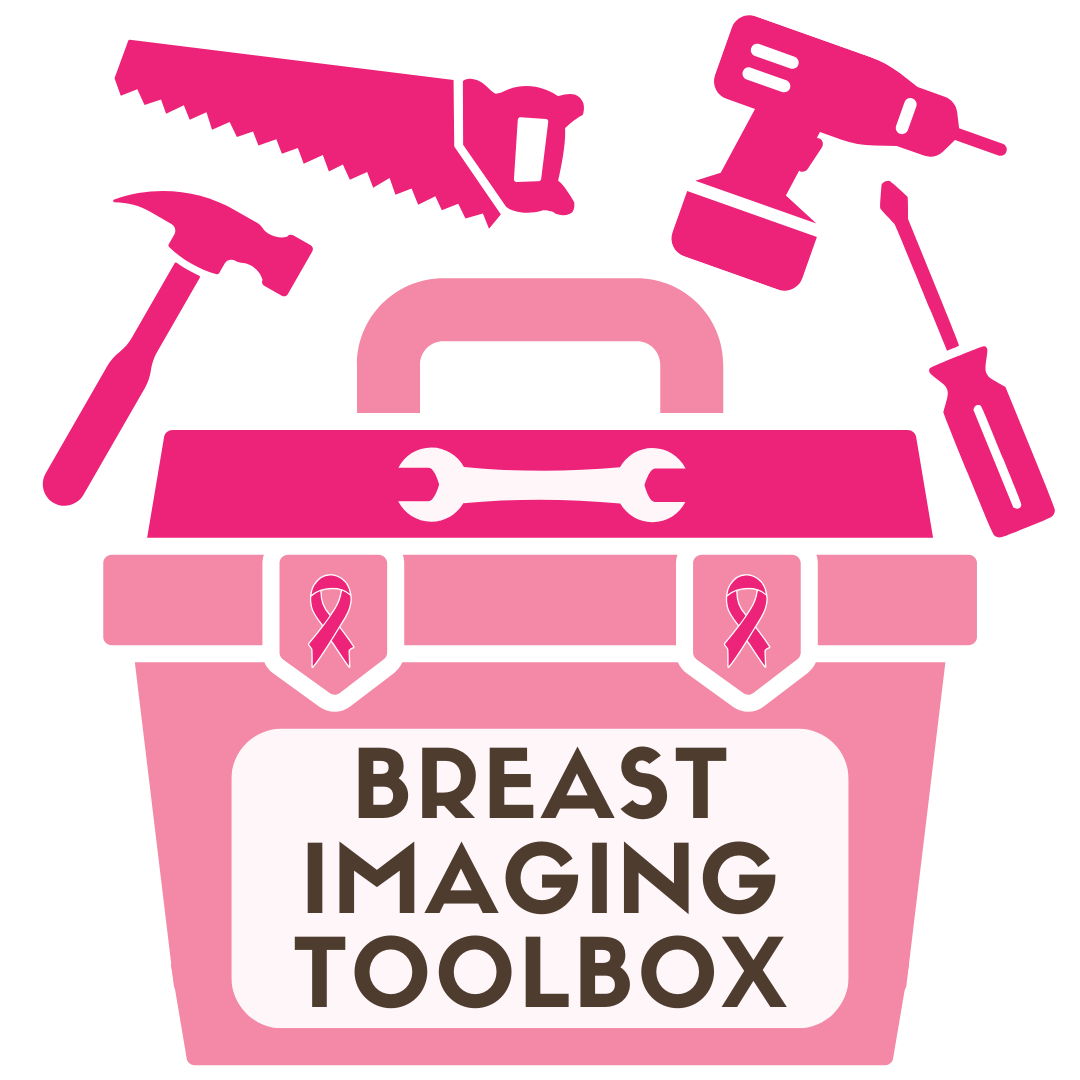Written by: Robyn Hadley, A.S., R.T.(R)(M)(ARRT)
To repeat or not to repeat, that is the question! As a technologist, have you ever found yourself standing in front of the workstation monitor debating whether to repeat an image or add a supplemental view? In deciding whether to repeat or add a view, maybe you’ve even caught yourself wondering, “Who is interpreting images today?” If this sounds familiar, it may be time to activate project protocol! Every successful building structure begins with a solid blueprint that includes a carefully designed plan laying the foundation for strength, efficiency and reliability. The same can be applied to a breast imaging department. Even the most experienced team can find themselves struggling with inconsistencies, inefficiencies and unnecessary challenges. A clear blueprint for standardized protocols is not just another checkbox for compliance, but can serve as a solid foundation for high quality patient care and seamless workflow efficiency for all team members.
Building a Strong Foundation
Many team members have the understanding that necessary imaging protocols are included in the facility’s Policy and Procedures Manual. While this may be true to some extent, a Policy and Procedure Manual generally does not include the comprehensive and inclusive imaging protocols necessary to establish clear expectations for imaging technologists. Imagine constructing a building without an architect’s blueprint. The results may likely include structural weakness, confusion among builders, and a final product that does not meet quality expectations. Similarly, a breast imaging department needs a solid blueprint. What can standardized protocols do for your department?

- Drive efficiency and consistency: clear guidelines mean less guesswork and fewer delays.
- Reduce errors: avoid pitfalls of incorrect views or missed steps.
- Enhance patient experience: clear consistent care reduces anxiety and promotes a positive experience.
- Improve patient outcomes: accurate and consistent imaging reduces unnecessary technical callbacks. Fewer technical callbacks free up time for new exams and diagnostic imaging, preserving revenue and reducing patient frustration.
- Protect radiologist focus: minimizing unnecessary interruptions between the interpreting radiologist and technologist allows the radiologist to work more accurately and efficiently.
- Boost team confidence: provides an outline for technologist training and competency assessment for new hires and current employees so that everyone knows exactly what is expected.
- Compliance and risk management: adhering to protocols ensures regulatory compliance.
- Reduce litigation risk: following established protocols helps mitigate errors.
Thomas et al. note that clear expectations set forth by substantiated imaging protocols limits confusion, defines workflow, creates uniformity and reduces misunderstanding among all team members and provides every patient with the same quality care (1).
Success Starts With a Solid Blueprint
Even the most carefully created blueprint is not effective without proper execution. Imaging departments are extremely busy, have tight deadlines and surging patient volumes. Let’s be real, busy imaging departments can sometimes tempt staff to cut corners, making small adjustments in an attempt to stay on schedule or catch up. Under those circumstances, there is risk of deviating from established standard processes, increasing errors, neglecting specific aspects of care and a potential decrease in image quality leading to technical recalls and increased patient anxiety. Technical callback examinations also take the place of a revenue producing, new patient examination or exam for a patient with an acute diagnostic finding, causing loss in revenue (2). Potential for risk of additional lost revenue may also occur from employee turnover costs related to unsupported practices or when a patient leaves to go to another facility due to an unsatisfactory experience.
Deviation from established protocols can increase the incidence of errors, therefore, increasing the risk of litigation. The likelihood of a radiologist being the defendant in at least one lawsuit is 50% by age 60. However, the frequency and average number of suits accrued varies widely by state of residence and sex (3). Patients may bring legal charges against radiologists or their imaging facility for a number of reasons including failure to diagnose breast cancer or negligence due to a fall resulting in injury. Established protocols and appropriate training can help to prevent the incidence of patient falls or injury during a mammogram. Though not all falls can be prevented, specific protocols relating to a patient fall can aid in the technologist knowing exactly what steps to take for prevention, response and follow-up should a fall occur.
A study by Shah et al. reported that some radiologists spend as much time on interruptions as they do interpreting studies (4). When staff interrupt their interpreting radiologists, this may take the attention away from the study or exam at hand, potentially decreasing accuracy, increasing the likelihood of dictation errors, missed diagnoses, and higher recall rates (5). Standardized protocols that outline clear guidance and imaging expectations can help limit interruptions to radiologists by decreasing imaging staff questions and allow for protected dictation time.
Engineering and Executing the Blueprint
A solid blueprint serves as a detailed guide outlining steps needed for consistent and efficient processes. However, it is only as good as the team that builds and follows it. Establishing standardized imaging protocols and who to involve in creating those processes should be strategically considered. Most importantly, it is the radiologists and technologists who will be performing the examinations, interpreting images and writing the protocols, therefore, their involvement and buy-in is imperative.
Key Team Members:
- Interpreting Radiologists: interpret the images and know what is critical.
- Imaging Technologists: capture the images and follow protocols daily.
- Administrators and Support Staff: receptionists, nurses, medical physicist, radiation officer, etc. provide the logistical backbone.
Protocols must be constructed from evidence-based material, well-recognized references, peer-reviewed literature and published guidelines (1). This includes using resources such as the ACR Practice Parameters, MQSA Regulations, ACR Appropriateness Criteria, and peer-reviewed literature from medical journals and imaging societies. A solid protocol is like a strong foundation, keeping the entire structure stable, ensuring smooth operations, and high-quality care.
Core Components:
- Scheduling guidelines
- Patient preparation and history intake
- Screening and diagnostic imaging guidelines
- Diagnostic callback imaging guidelines
- Breast imaging procedure guidelines
- Utilization of skin markers for scars, skin lesions and abnormalities
- Technical callback imaging guidelines
- Image acquisition and quality check: a standardized positioning technique should be implemented and utilized by all technologists to ensure consistency and image reproducibility, along with proper use of body mechanics to maintain technologist physical wellbeing.
- Supplemental views: appropriate use of supplemental views should be clearly established.
- Special imaging considerations: consider including emergency protocols for patient adverse events, special patient circumstances and patients with physical limitations.

Imaging protocols should not include adverse/sentinel event procedures, but should provide an index for the location of that information in the facility’s policy and procedure manual with a reference listing the specific policy number or title. Additional reference to detailed facility policies that supplement the protocol should be listed in the protocol manual for quick reference.
Accessibility:
Even the best blueprint is useless if no one can find it. Consider the following to ensure your team has easy access to the protocols:
- Scheduling guidelines
- Offer a digital version on a shared drive
- Provide physical protocol binders in each imaging room
- Update all team members annually and upon revision to maintain consistency
- Create a pocket-size, “cheat sheet” for quick reference and on-the-spot examination guidance (for diagnostic exams: workup for calcifications, masses, asymmetries, pain, required diagnostic views, etc.)
Imaging departments have the potential to build a foundation of excellence with a solid protocol blueprint. A system that supports staff, patients and the overall success of the facility can be built to last with strategically engineered and executed standardized imaging protocols.
Are you ready to lay the foundation for a stronger imaging team? Let Mammography Educators help you start crafting your blueprint today. To learn more, click here!Special thank you to Sarah Jacobs, B.S., R.T.(R)(M)(CT) for her contributions to the content of this blog.
References:
- Thomas K. Farrell M. How to write a protocol: part 1. Journal of Nuclear Medicine Technology March 2015, 43 (1) 1-7, https://doi.org/10.2967/jnmt.114.147793.
- Smith-Foley, S. (2024, April 30). Elevating the patient experience in breast imaging. AHRA online institute.
- Baker, S., Whang, J., Luk, L., Clarkin, K., Castro III, A., Patel, R. The demography of medical malpractice suits against radiologists. Radiology. 2013 266:2, 539-547.
- Shah, S., Atweh, L., Thompson, C., Carzoo, S., Krishnamurthy, R., Zumberge, N. Workflow interruptions and effect on study interpretation efficiency. Current Problems in Diagnostic Radiology. Volume 51, Issue 6, November–December 2022, Pages 848-851 https://doi.org/10.1067/j.cpradiol.2022.06.003.
- Yoon S., Ballantyne N., Grimm, L., Baker, J. Impact of interruptions during screening mammography on physician well-being and patient care. Journal of the American College of Radiology, Volume 21, Issue 6, 896 – 904.



